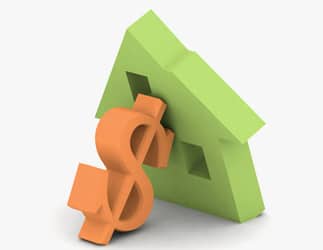Fixed Home Loan Rates? 10 questions for careful consideration before you lock in interest rates – Intuitive Finance
A question we are regularly asked is “Is now a good time to fix my interest rate”. It’s a great question and 1 that doesn’t have a simple Yes or No answer to it, without doing just a little bit more analysis of a client’s situation.
Competition in both the variable and the fixed rate mortgage product arena is fierce and lenders are often reducing their offerings to entice borrowers to consider switching their loans or fixing some or all of it. With this competition, it’s little wonder that some borrowers are finding the idea of fixing all or a portion of their property debt an enticing option.
However, the question of whether a fixed rate package is right for you remains a very personal one, based on your specific circumstances and goals. As such, here are 10 questions that you would do well to think about before allowing lenders to lure you in…
1. How do I decide on the fixed rate term?
If you are determined to take the banks up on a fixed rate loan, the main consideration will be how long you decide to lock in for. This should ultimately depend on your plans for the next one, two, three or five years.
If you have any intention of refinancing the property or require a degree of flexibility in terms of the debt over the asset, then you need to think about these things long and hard before agreeing to say, a five-year fixed product. Remember, early exit and break fees will apply if you terminate the fixed rate agreement before it matures. These break costs can be quite prohibitive so careful consideration is required.
2. Is there an allowance for an offset account attached to a fixed rate mortgage?
The simple answer is no, unfortunately. Only a very small minority of lenders offer an offset account as an option on fixed rate products, even though it would give you the distinct advantage of being able to offset against either the fixed or variable portion of your loan, depending which had the higher interest rate at the time and therefore, would reap the greatest offset reward.
3. Can I make additional repayments?
 As a general rule, the answer is No. However in saying this, most lenders will allow a maximum of between $5000 and $10,000 in additional repayments to a fixed rate loan per annum.
As a general rule, the answer is No. However in saying this, most lenders will allow a maximum of between $5000 and $10,000 in additional repayments to a fixed rate loan per annum.
Why I hear you ask? Well, the lenders also “buy” this money at a certain rate and they need to make a return of the funds. If they allow borrowers to lock the rates in and then repay them, they would not get the return they need to make the deal worthwhile. At the end of the day, we are lucky in Australia to have so many options available to us and whilst “bank bashing” is a favourite past time, it is important that we have strong profitable banks.
4. Do I have redraw?
As above, generally, this answer is No, however, a small minority of lenders will allow this. Again, if its flexibility, offset accounts and redraw that you seek, then a fixed rate is probably not for you.
That said, you can have the best of both worlds and chose to split your loan to avail of both the fixed and variable rate options. Please see point 5 for more details
5. If I decide to split my loan between fixed and variable rates, how do I determine the amounts for each?

This should be weighed up in light of any savings you can place in that offset account. If you have to say, $60,000 to deposit straight into your offset account and can add extra annual savings to that of $20,000 and you take out a three-year fixed loan, ideally, the portion that remains variable (i.e. the part of your loan that will benefit from offset credits applied to your interest repayments) will be around $120,000. You can then secure the balance at the fixed rate for three years.
This also depends on whether you are actually seeking more security from the fixed rate (where a larger portion may be fixed) or whether you need more flexibility (where a smaller portion might be fixed).
Again, we would always encourage some careful analysis around this first before making this final decision.
6. What if I decide to sell the property during the fixed period?
This is where you need to be aware of the fine print. What break costs will be applied if you exit the contract prior to the end of the agreed fixed rate period? These may be prohibitive, so this is an essential consideration to make prior to committing to any type of fixed rate term. I have seen clients forced to pay tens of thousands of dollars in early fixed rate termination fees. Ouch!
7. What if I want to refinance the property during the fixed rate period?
As above. You are prohibited from refinancing any part of your mortgage by the fixed rate product terms that would govern your mortgage. This could potentially mean missing out on accessing equity and investing in further property during the fixed rate period, or conversely, paying costly break fees to exit the agreement prematurely.
8. How will I feel if interest rates drop further during the fixed rate term?

While some people are happy to take this gamble, content to sit at a fixed rate because it gives them certainty around their repayments for three to five years, others find the stress of missing out on dropping variable rates too much to handle. If you fall into the latter category, then perhaps fixed terms are not ideal or for you.
Clients with larger portfolios can select the options of fixing some of their portfolio and even vary between different terms so that you are undertaking some interest rate risk management. The benefit of taking different terms is that then, not all your loans come due for renewal at the same time. This is a technique we use regularly for our larger clients.
9. Can I access extra equity if my property has increased in value during the fixed rate term?
This is obviously subject to the lenders terms and credit policy on any given day but the short answer is Yes you can. Whilst the fixed rate means you are bound to that lender and the remaining fixed rate term in place, you can access the equity by establishing a further or secondary loan against that security property. The only real restriction can be if that lender’s policy has changed and you don’t meet their criteria any longer.
10. What if I’m not sure about my job security?

This is really a question that begs an entirely different approach to fixing or not fixing. If you were at all uncertain as to your future employment status, I would advise considering refinancing your mortgage and pulling out a cash buffer to sit in an offset account against a variable rate loan product.
This might tide you over financially should you end up experiencing a 6-month work hiatus. And given that interest rates are at an all-time low right now, just as the market is experiencing a very healthy level of activity, chances are you can borrow against your property whilst it’s experiencing a peak in values, with the extra debt costing you relatively less.
Just remember, if you do decide on this type of refinancing strategy, any cash reserve you end up with should be maintained as a contingency for rainy days, not flittered away on holidays or luxury retail purchases.
I still believe that cash buffers and the “rainy day” accounts are an under-utilized tool for most Australians as they simply don’t understand that buying property is actually not about the property, it’s all about the time you give your property(s) to experience enough property cycles so the wealth creation and compounding effect can take place. After all, property investing is not a “get rich quick” scheme, it’s a tried and tested long term wealth creation strategy.
In conclusion
While there are some rather appealing fixed rate offerings currently being promoted by lenders keen to steal your business away from the competition, in my professional opinion you would do well to think carefully before locking yourself into a lengthy fixed rate term.
Given that banks are not in the business of giving money away, borrowers should ask themselves what the sector sees in its crystal ball with regard to future interest rate movements, if they are so willing to play hardball with their three to five-year fixed options.
So before you thank the banks for their generosity, do your sums and importantly, see if there’s a deal to be done with your existing variable product. In this environment, you just never know.
If you would like professional guidance when it comes to securing the best possible property debt for your needs – be it a home mortgage or investment loan – why not speak to us here at Intuitive Finance? We will carefully assess your needs and walk you through the best possible solutions accordingly.
About Intuitive Finance
The team at Intuitive Finance will listen to your needs, undertake a comprehensive review of your current financial position and then provide a clear, detailed and comprehensive investment strategy for you to put in place. We have written close to a billion dollars in loans and our team has access to over 500 financial products from more than 30 lenders covering a myriad of requirements – from home loans for repeat and first home buyers to first time and astute investors – and is perfectly placed to help guide you through the available options.
Disclaimer:
The financial industry is a dynamic industry – continually evolving and changing. Whilst every effort has been made to ensure its accuracy, no guarantee is given that the information contained herein is currently correct. To the extent permitted by law, Intuitive Finance accepts no responsibility or liability for any loss or damage what so ever (including direct and indirect) to any person arising from the use or reliance on the information detailed here.
- Choosing the right mortgage solution of variable fixed or both - October 8, 2024
- All You Need to Know About Bank Valuations - September 20, 2024
- Getting the Most out of the Spring Property Season - August 26, 2024

